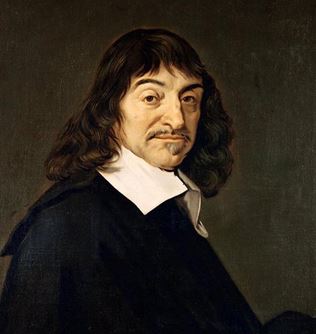René Descartes was a french philosophers, author of the discourse of the method and whose ideas have changed the world.

Ideas that have changed the face of the world
« I think therefore I am », « to make ourselves masters and possessors of nature » : few philosophers can boast of having formulated ideas that have so changed the face of the world. René Descartes was born on 31 March 1596 in the village of La Haye in Touraine (which now bears the name of Descartes), from a middle-class family . René Descartes will never know his mother, who died following childbirth. Himself will be handicapped all his life by a fragile health which will lead him in particular to never get up before 11 am ! At the age of 8, he entered the Jesuit college of La Flèche, newly founded by Henri IV, where he received a strict and solid education. His taste and his talent for mathematical things are already affirmed there.
The earth revolves on itself and around the sun
Later, he studied law at the faculty of Poitiers, studies crowned by obtaining a license. He never began a legal career, but rather joined, like many of his young contemporaries, in a European army, for him the Bavarian army. Descartes will never have to fight, and will essentially take advantage of this commitment to travel through Europe. It was not until 1628 that Descartes put his suitcases in Holland, away from Parisian society. In 1633, he was ready to publish Le Monde, a work that described the physical structures that govern us. In particular, he defends the fact that the earth revolves on itself and around the sun, following in this Copernicus and Galileo. But the latter has just been condemned by the Inquisition, and Descartes prefers to be cautious.
The Discourse on the Method
In 1635, René Descartes had a daughter, with the servant of an Amsterdam bookseller. But five years later, in 1640, he lost both his daughter and his father, a month apart, which plunged him into « the greatest regret he had ever felt in his life« . The Metaphysical Meditations began to have a certain impact in intellectual circles, and he had to respond both to Hobbes’ objections and to the accusations leveled against him during the Quarrel of Utrecht. His most famous work is Discourse on the Method for Conducting Reason Correctly and Seeking Truth in the Sciences, which he published in 1637 in French (while most scientific or philosophical works were still written in Latin). He relies on mathematics, which for him is the only certain thing. The Speech is accompanied by 3 essays, like so many illustrations of the method: Dioptrics (geometrical optics and laws of refraction) – Meteors (meteorology) – Geometry. The latter is by far the most important of the 3 essays: it explains how to link geometry and calculation, and creates analytical geometry.
His skull bequeathed to the Musée de l’Homme in Paris
At more or less regular intervals, René Descartes will publish other works, including the Principles of Philosophy in 1644. Like most scholars of his time, he will be the object of disputes and disputes over priority, but can always count on the support of his friend Mersenne in Paris. In September 1649, he responded to the invitation of Queen Christine of Sweden, who wished to learn philosophy. In the cold of the Scandinavian winter, Descartes contracts pneumonia. He fell ill and died on February 11, 1650. His body was repatriated to France, and his skull bequeathed many years later (in 1931) to the Musée de l’Homme in Paris (although doubts remain about its authenticity). His coffin is still kept in the Saint-Germain-des-Prés church in Paris. The project to transfer it to the Pantheon was raised, but never came to fruition.






Laisser un commentaire